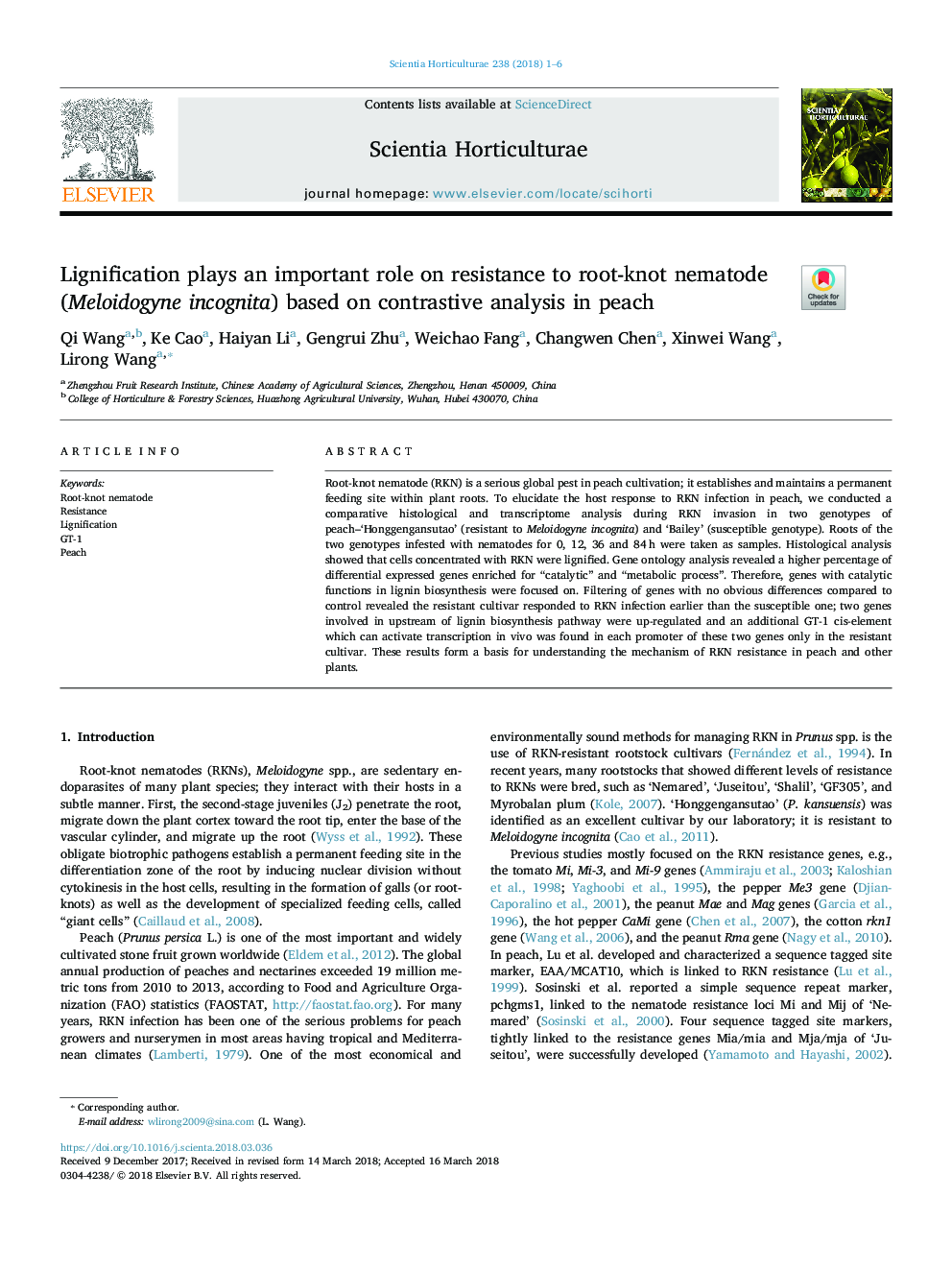| Article ID | Journal | Published Year | Pages | File Type |
|---|---|---|---|---|
| 8892487 | Scientia Horticulturae | 2018 | 6 Pages |
Abstract
Root-knot nematode (RKN) is a serious global pest in peach cultivation; it establishes and maintains a permanent feeding site within plant roots. To elucidate the host response to RKN infection in peach, we conducted a comparative histological and transcriptome analysis during RKN invasion in two genotypes of peach-'Honggengansutao' (resistant to Meloidogyne incognita) and 'Bailey' (susceptible genotype). Roots of the two genotypes infested with nematodes for 0, 12, 36 and 84â¯h were taken as samples. Histological analysis showed that cells concentrated with RKN were lignified. Gene ontology analysis revealed a higher percentage of differential expressed genes enriched for “catalytic” and “metabolic process”. Therefore, genes with catalytic functions in lignin biosynthesis were focused on. Filtering of genes with no obvious differences compared to control revealed the resistant cultivar responded to RKN infection earlier than the susceptible one; two genes involved in upstream of lignin biosynthesis pathway were up-regulated and an additional GT-1 cis-element which can activate transcription in vivo was found in each promoter of these two genes only in the resistant cultivar. These results form a basis for understanding the mechanism of RKN resistance in peach and other plants.
Related Topics
Life Sciences
Agricultural and Biological Sciences
Horticulture
Authors
Qi Wang, Ke Cao, Haiyan Li, Gengrui Zhu, Weichao Fang, Changwen Chen, Xinwei Wang, Lirong Wang,
